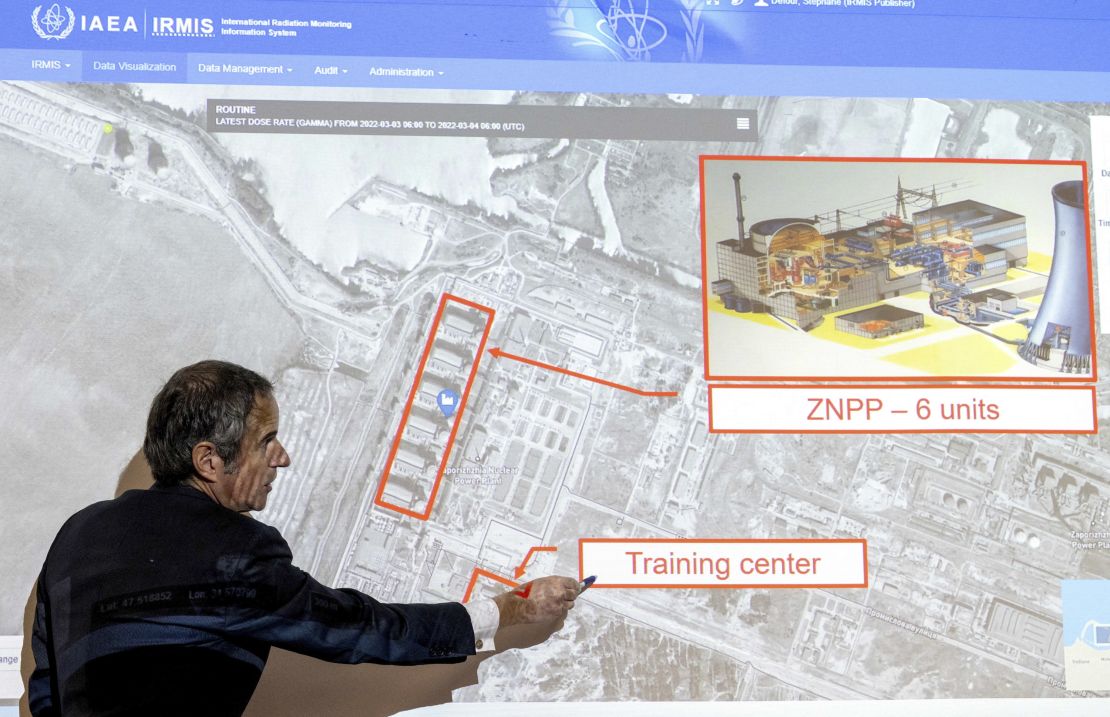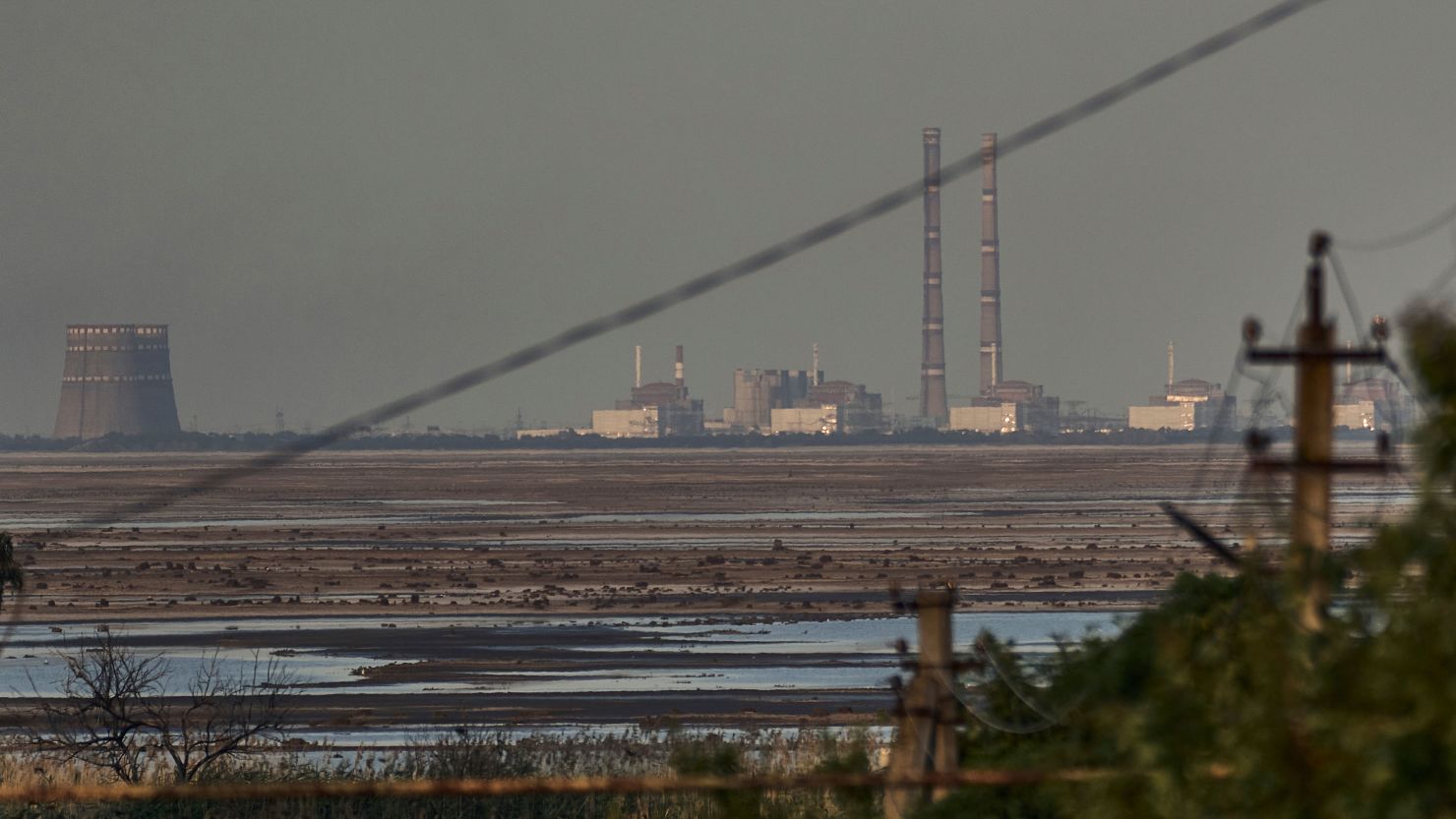The Zaporizhzhia Nuclear Power Plant (ZNPP) in Ukraine was damaged Sunday in a drone attack, the United Nations’ energy watchdog said, as both Russian and Ukrainian officials denied responsibility for the strike and accused the other of carrying it out.
The International Atomic Energy Agency (IAEA) reported the attack at the Russian-controlled facility, but said the damage “has not compromised nuclear safety.”
The drone attack included three direct hits against the facility’s main reactor containment, the agency’s director-general, Rafael Grossi, said on X. One person died as a result of the attack, he added.
“This is a clear violation of the basic principles for protecting Europe’s largest (nuclear power plant). Such reckless attacks significantly increase the risk of a major nuclear accident and must cease immediately,” Grossi said.
Russian authorities accused the Ukrainian military of carrying out a series of attacks against the plant using “self-exploding” drones, according to a statement posted on ZNPP’s official Telegram channel.
But Ukrainian officials denied responsibility and accused Russia of endangering the nuclear facility and surrounding population.
“The incidents at ZNPP are also a form of Russian nuclear blackmail aimed at both Ukraine and the international community,” a Ukrainian government agency said Monday.
Kremlin spokesman Dmitry Peskov on Monday condemned Ukraine’s denial of involvement and said the drone attack is “a very dangerous practice that has very bad, negative consequences.”
A truck unloading food was damaged, and another hit was registered in the cargo port area of the facility, according to the ZNPP statement.
“Shelling of Zaporizhzhia NPP and its infrastructure is unacceptable. No nuclear power plant in the world is designed to withstand full-fledged fire from the armed forces.
Damage to infrastructure facilities may affect the safe operation of the NPP,” the statement added, using an acronym for the nuclear power plant.
Following Russia’s accusations, Ukraine denied any involvement in the attack, the spokesperson for the Defense Intelligence of Ukraine, Andriy Yusov, told Ukrainian news outlet Ukrainska Pravda.
“The aggressor state is once again endangering the nuclear facility, civilians and the environment of the whole of Europe,” Yusov said, according to Ukrayinska Pravda.
CNN cannot independently verify Russia’s or Ukraine’s claims.
“No one can conceivably benefit or get any military or political advantage from attacks against nuclear facilities. This is a no go. I firmly appeal to military decision makers to abstain from any action violating the basic principles that protect nuclear facilities,” Grossi said.
CNN has reached out to Energoatom, Ukraine’s largest power producer, and to the Ukrainian Armed Forces for comment.
What’s happened at Zaporizhzhia before?
The ZNPP has been under full Russian control since March 2022, but some Ukrainian staff continued working alongside Russians to operate it. Petro Kotin, head of Ukraine’s nuclear power operator Energoatom, said they were initially forced to work at “gunpoint” by invading Russian troops.
When the war began in February 2022, one of the plant’s six reactor units was closed for maintenance. After Russian forces took control of the plant, the Ukrainian workers shut down the remaining units.

But fighting continued to rage around the plant in the summer of 2022, to the grave alarm of the IAEA. Grossi said “every principle of nuclear safety had been “violated” at the plant, and later managed to secure his staff a visit to the site in August, while it remained under Russian control.
After the breach of the Nova Kakhovka dam in June 2023, which precipitously lowered water levels used for cooling the plant, all of the reactors at ZNPP were put into “cold shutdown” status, meaning the plant is now inactive.
But the plant has still been a flashpoint. In July, Ukrainian President Volodomyr Zelensky said Russian troops had placed “objects resembling explosives” on roofs at the ZNPP. The Kremlin denied those allegations.
Throughout the war, Russia has warned that Ukrainian shelling around the plant could lead to a radioactive incident, although analysts have told CNN that the rhetoric is meant to discourage Ukraine from conducting its own counteroffensive operations in Zaporizhzhia region.
While fighting around the ZNPP often sparks fears of another Chernobyl-style disaster, nuclear experts say the cooled reactors would not recreate the sort of destruction seen after the meltdown of the active Chernobyl plant in 1986.
